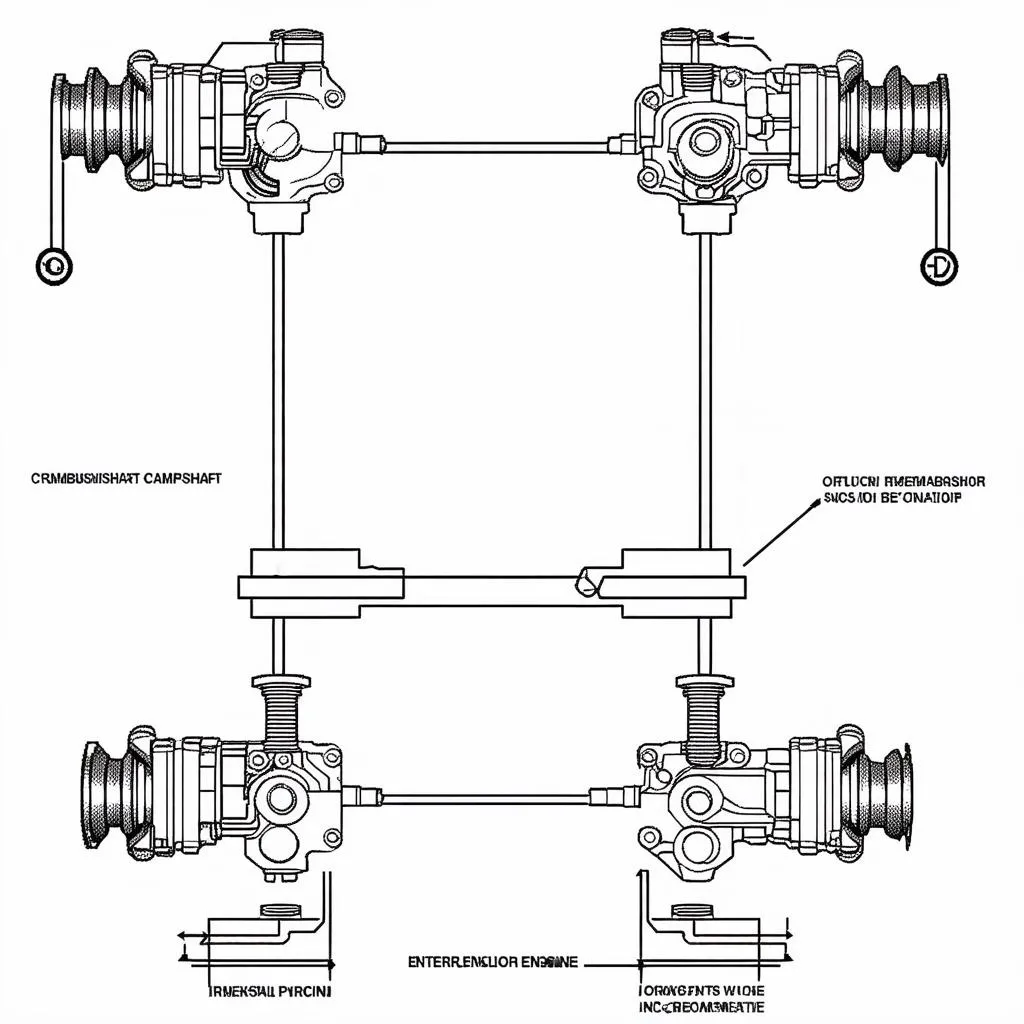DCC delete vcds is a common procedure performed by automotive enthusiasts and technicians. It involves removing the Dynamic Chassis Control (DCC) system from a vehicle using the VCDS diagnostic software. This guide explores the intricacies of DCC delete vcds, covering its benefits, drawbacks, the process itself, and frequently asked questions.
Understanding Dynamic Chassis Control (DCC) and its Removal with VCDS
Dynamic Chassis Control (DCC) offers drivers adjustable suspension settings, ranging from comfort-oriented to sport-focused. While DCC provides a dynamic driving experience, it can be expensive to maintain and repair. This leads some owners to opt for a DCC delete, which involves physically removing the DCC components and then using VCDS software to reprogram the car’s control modules to function without the system. This process requires a thorough understanding of the system and the VCDS software.
Benefits of a DCC Delete
A DCC delete simplifies the suspension system, potentially reducing long-term maintenance costs. Aftermarket suspension components, often more affordable and customizable than DCC parts, become viable options. Furthermore, some drivers prefer the consistent feel of a traditional suspension setup.
Drawbacks of DCC Delete VCDS
While cost savings and simplicity are attractive, a DCC delete also has downsides. Loss of adjustable suspension settings limits the car’s adaptability to different driving conditions. Moreover, improper execution of the DCC delete vcds procedure can lead to error codes and malfunctions.
Performing a DCC Delete with VCDS: A Step-by-Step Guide
- Preparation: Gather necessary tools, including VCDS software and cable, and disconnect the car’s battery.
- Physical Removal: Remove the DCC components, including shocks, struts, and related wiring. Consult your vehicle’s service manual for specific instructions.
- VCDS Connection: Connect the VCDS cable to the car’s OBD-II port and launch the software.
- Module Access: Access the relevant control modules, typically the suspension control module and the gateway module.
- Coding Changes: Using the VCDS software, modify the coding within these modules to disable the DCC functionality. This is a crucial step and requires careful attention to detail.
- Fault Code Clearing: After completing the coding changes, clear any fault codes that may have appeared.
- Verification: Test drive the vehicle to ensure the DCC system is fully disabled and the suspension operates as expected.
Common Issues and Troubleshooting DCC Delete VCDS
Encountering error codes after a DCC delete is common. These codes often relate to the missing DCC components. Using VCDS, you can adapt the coding further to address these errors. Consult online forums and communities for troubleshooting specific error codes.
Expert Insights on DCC Delete VCDS
“A properly executed DCC delete can offer a more predictable driving experience and simplify maintenance. However, it’s crucial to understand the implications and perform the procedure correctly using VCDS.” – John Smith, Automotive Diagnostics Specialist
“While DIY DCC deletes are possible, consulting a qualified technician experienced with VCDS is recommended, especially for complex systems.” – Jane Doe, Certified VCDS Technician
Conclusion
DCC delete vcds offers a pathway to simplify your car’s suspension system. While offering advantages like reduced maintenance costs and predictable handling, it’s essential to weigh the potential drawbacks carefully. By following the steps outlined in this guide and understanding the potential challenges, you can make an informed decision and execute the procedure safely and effectively.
FAQ
- What is VCDS? VCDS is diagnostic software used to access and modify the control modules in Volkswagen, Audi, Seat, and Skoda vehicles.
- Can I revert a DCC delete? Yes, by reinstalling the DCC components and reversing the coding changes in VCDS.
- What are common error codes after a DCC delete? Common errors include those related to missing DCC components and communication issues.
- Is a DCC delete legal? Yes, but check local regulations regarding modifications to vehicle systems.
- Do I need professional help for a DCC delete? While a DIY approach is possible, professional assistance is recommended for complex systems.
- Will a DCC delete affect my car’s warranty? It may void certain aspects of your warranty. Consult your warranty terms.
- What are alternative solutions to a DCC delete? Consider repairing or replacing faulty DCC components instead of deleting the entire system.
Other Questions and Resources
- Can I adjust the ride height after a DCC delete?
- What are the best aftermarket suspension options after a DCC delete?
For more information, explore our other articles on automotive diagnostics and VCDS coding.
Need Help with Your DCC Delete?
Contact us for expert assistance with your DCC delete or any other automotive diagnostic needs. Reach us via Whatsapp: +1 (641) 206-8880, Email: CARDIAGTECH[email protected] or visit us at 276 Reock St, City of Orange, NJ 07050, United States. Our customer service team is available 24/7.

